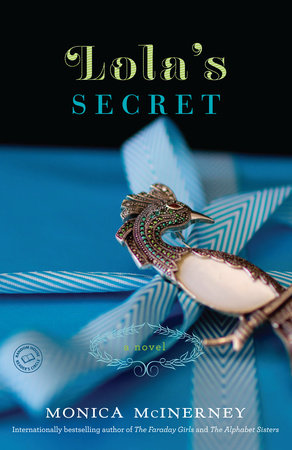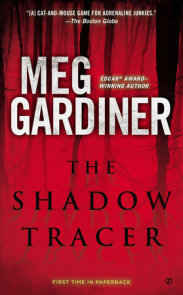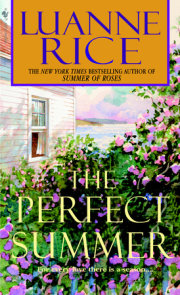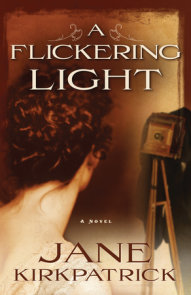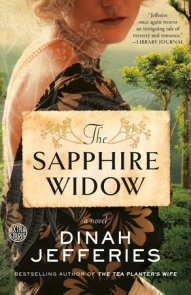READERS GUIDE
Questions and Topics for Discussion
1. Lola is charming, outspoken, and flamboyant, as well as a kindly meddler and a take-no-prisoners busybody. Would you like to have her for your grandmother or great-grandmother? How would your life be different with a Lola in it?
2. This novel has so many themes running through it—family, happiness, love, loss, reconciliation, mental illness, community, secrets, etc. Which thematic elements resonated with you the most?
3. The novel has an interesting structure, alternating between Lola’s perspective and that of several of her potential guests. Why do you think the author chose to structure the book that way?
4. Lola considers herself a “Fixer,” a concerned observer. She’s al- ways sticking her nose in her friends’ and family’s business. Why does she do it? Does her point of view change at all over the course of the book?
5. Geraldine and Lola are polar opposites and have never gotten along. What enables them to eventually come to terms with each other?
6. What did you think of Bett’s struggles with motherhood and work-life balance?
7. Why do you think Bett and Carrie couldn’t stop bickering without Lola’s help?
8. Lola is overjoyed to be able to reconnect with her old flame Alex, something that’s becoming more and more common in our day and age. What do you think is driving the resurgent interest in finding love late in life?
9. Of all the different characters and guests, who was your favorite?
10. To you, what is the true meaning of Christmas?
A Conversation with Monica McInerney
Random House Reader’s Circle: This novel catches up with some of the same characters your readers came to know and love in your earlier novel The Alphabet Sisters. What made you decide to revisit this family, especially Lola Quinlan?
Monica McInerney: Lola has always been one of my favorite characters. I loved writing her scenes and dialogue in The Alphabet Sisters, seeing the world and family life through the eyes of a woman in her eighties. She’s wise, outspoken, witty, cheeky, flamboyant, just so much fun to write. I didn’t know my own grandmothers, so I think in many ways Lola also became the grandmother I’d loved to have had myself—the only problem being that she was fictional.
In October 2010 I was in Australia on a monthlong promotional tour for my novel At Home with the Templetons. Throughout the tour, readers kept mentioning The Alphabet Sisters to me, telling me how it had made them laugh and cry and how they had loved Lola, in particular. I was so touched to hear that, because it has always been a special book to me, too. On the last week of the book tour, a missed flight meant I had to unexpectedly spend a night in a motel in my hometown of Clare, the setting for The Alphabet Sisters. I went to sleep thinking about being back there, about the Quinlan family from The Alphabet Sisters, and about Lola herself. I woke up at five A.M. with the entire plot for Lola’s Secret in my head. I leaped out of bed, made a cup of tea, and got my notebook. I also have to confess that I put on some lipstick—I was never able to write any of Lola’s scenes unless I was wearing a garish red lipstick like she favors! For the next hour, I wrote pages of notes. As soon as I got back home to Dublin, I started writing the book. It poured out of me, day and night, and I finished it in less than six months. It’s the fastest I have ever written one of my novels. I enjoyed every minute of it, too. It was like being in Lola’s own company the entire time, as though she was telling me the story and I was simply writing it down.
RHRC: Do you have plans to feature any of the family members or guests again in future novels?
MM: I’d definitely like to revisit the Quinlan family one day. As a reader, I often wonder myself what becomes of the characters in books I’ve finished, and as a writer, the great thing is you can write it and find out. I’d like to bring Lola back home to Ireland and see what she thinks of her home country sixty years after she was last there.
RHRC: You grew up in the Clare Valley of Australia, where the book is set. Are any of the locations or characters in the book based on people or places in real life?
MM: I love setting my novels in my hometown. So far, the Clare Valley has appeared in five of my novels—I think it’s a way of me visiting and being there, even when I’m on the other side of the world. The Valley View Motel is fictitious, although there are sev- eral motels in the town of Clare. I worked as a kitchen hand, waitress, and cleaner in one of them in my teenage years, so I certainly borrowed some experiences from that, for both The Alphabet Sisters and Lola’s Secret. As a teenager, I also used to haunt the thrift shop in the town’s main street, looking for books and vintage clothing. I loved eavesdropping on the conversations between the volunteers, usually older women. So that fed into Lola’s Secret, too. I’ve also experienced those scorching one hundred degrees Fahrenheit De- cember days in South Australia, the feeling of hot dry heat that’s like opening an oven door every time you step outside. All of those real-life memories found their way into the fictional story.
RHRC: What was your writing process like for this novel? Have your methods changed over time?
MM: Each book is so different. That surprises me about the writing process, even after nine novels. Lola’s Secret arrived unexpect- edly and flowed out of me, as I mentioned earlier. I knew all the characters already and it was a joyous experience to spend time with them again. I knew how each of them would react in any situation. I am writing my tenth book at the moment, and it’s a very different experience. I’m getting to know each of the characters slowly, and the plot is unfolding in the same way. I try to write at least two thousand words every day. Writing a book is sometimes like building a house, you have to do it brick by brick by brick.
RHRC: Lola defies many stereotypes of the elderly, including technophobia. Have you known any seniors in real life who love the Internet as much as Lola and her friends do?
MM: I’m surrounded by them! I’m also so far behind them when it comes to technology it’s embarrassing. My ninety-five-year-old father-in-law here in Dublin uses the Internet, sends email, and also rings and texts on his mobile phone. My seventy-two-year-old mother in Australia Skypes, sends emails, and texts all seven of her children and many of her grandchildren, too. My husband and I recently had visitors from Australia. I met them in the center of Dublin, and they said how much they liked our house. “But you haven’t been there yet,” I said, puzzled. They cheerily explained that they had looked it up on Google Earth the previous night on their laptop while they were using the free Wi-Fi in their hotel room, which they had booked over the Internet. They are in their mid-seventies. My local library has a trio of computers and every time I’m there I see elderly people blogging, researching family trees, watching videos. I can barely make calls on my cellphone (and it is a very long way from being a smartphone, let me tell you!).
RHRC: If she were here right now, what advice do you think Lola would have for yourself or your readers?
MM: Be kind to yourself and be kind to others. And try to laugh as much as you can.
RHRC: What have your experiences been with book clubs? Are you part of one? Do you ever speak at book clubs?
MM: I’ve been involved in book clubs from both sides, as a member of one here in Dublin for several years, and recently, as the guest of a book club discussing my previous novel At Home with the Templetons. I loved both experiences and they have also been so helpful for me as a writer. It was a revelation to see the different reactions my book club members had to the same book. We argued so forcefully about different aspects of characters, plots, finales, etc. There was never a discussion in which everyone felt exactly the same way about a book. I found that fascinating. It underlines to me what magical objects books are—they really do change to suit whoever is reading them, because we all bring our own hopes, experiences, opinions, and selves to each book we read.
The book club discussing my novel At Home with the Templetons didn’t hold back either. It was a very lively evening. Several readers were angry (with good reason, I must admit) with one of my characters’ actions, and I had to defend and explain why she had done what she had done. Another was upset that I kept two of the main characters apart for so long. I thoroughly enjoyed the discussion. I felt like a lioness defending my cubs.
RHRC: What are some of your favorite books you’ve read recently?
MM: I’ve read and enjoyed so many different sorts of books this year: The Hunger Games trilogy by Suzanne Collins is aimed at young adults but has so much in it for all ages about morality, media, celebrity, and politics. I read all three back-to-back, I couldn’t put them down. How to Be a Woman, a funny feminist memoir by English columnist Caitlin Moran, is a book I’ve given to my friends, sisters, nieces, even my mother to read—it’s challenging, opinion- ated, comforting, invigorating, and very funny. I loved the 1950s classic of New York life The Best of Everything by Rona Jaffe. Irish writer Sebastian Barry’s On Cannan’s Side was so moving and also enlightening about Irish emigration and many important moments of modern American history. I also loved a beautiful collection of poetry called The Taste of River Water by Australian writer Cate Kennedy.
RHRC: Can you tell us anything about what you’re working on next?
MM: I’m back writing the big family comedy-drama I was working on before I suddenly got the idea for Lola’s Secret. It’s been bubbling away in my subconscious for the past year and I am now nearly half- way into it. I’m enjoying writing it very much. I wanted to explore a different kind of family setup with this book, one with stepsisters and stepbrothers. I’m fascinated with the different dynamics and loyalties within a blended family, especially when an event forces everyone to face up to their true feelings. It revolves around one main question: Can you forgive someone you’re not sure you ever loved in the first place?









